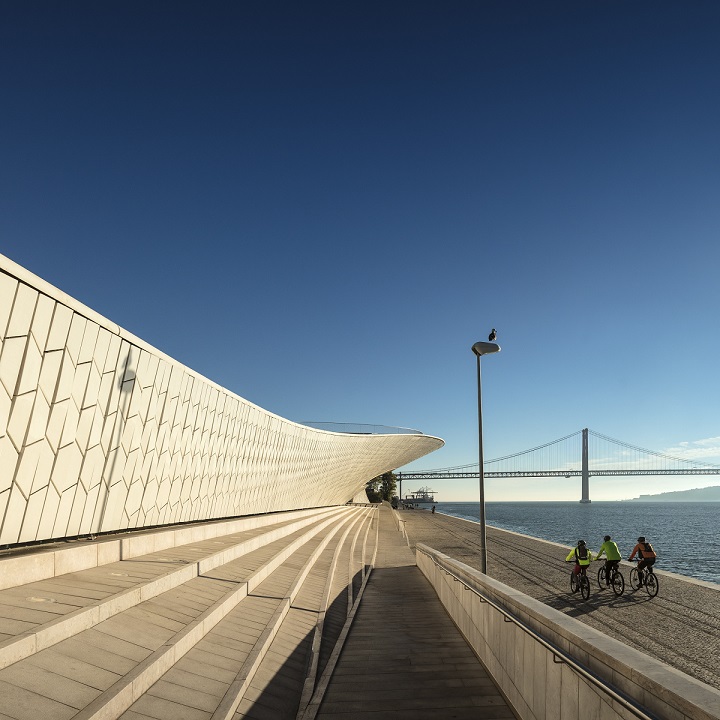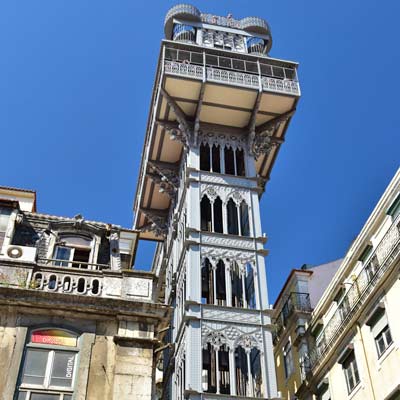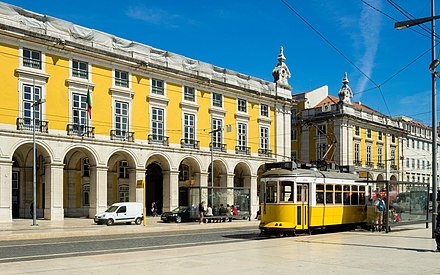Stroly loves Lisbon

Hi, my name is Toru! Lisbon came for the first time at the 2017 Web Summit, I loved Lisbon because of its beautiful cityscape and kindness of the locals! Based on what I liked and made a Lisbon Stroly map! Enjoy Web Summit in Lisboa!
All spots information
6 spots
 pin
pin

The MAAT - Museum of Art, Architecture and Technology, which opened its doors to the public on 5 October. Presenting itself as a new cultural centre in the city of Lisbon, the MAAT represents an ambition to host national and international exhibitions with contributions by contemporary artists, architects and thinkers.

The Elevador de Santa Justa is one of the truly unique tourist attractions of Lisbon. This 19th century industrial age marvel transports passengers up 45m from the Baixa district to the Largo do Carmo. The Elevador de Santa Justa dates from an era when wrought-iron was not just a construction material but also an elegant art form. The exterior structure is adorned with glorious neo-gothic arches and geometric patterns, while inside two sumptuous polished wood carriages whisk passengers up in style. Historically the Elevador de Santa Justa was an invaluable part of Lisbon’s public transport network, but today it is primarily a tourist attraction, and one of the highlights of the Baixa district. As to confirm the tourist focus of the Santa Justa, a viewing platform has been created at the top of the lift, and from here are some of the finest views of central Lisbon.LisbonLisboaPortugal.com

In 1846, one of Lisbon’s most significant factories, the weaving and textile company Companhia de Fiação e Tecidos Lisbonense, found its home in Alcântara. In the following years, the 23.000m2 industrial site was occupied by the food processing company Companhia Industrial de Portugal e Colónias and by printers Anuário Comercial de Portugal and Gráfica Mirandela. After years of being hidden from the public eye, this little fraction of the city has now been unveiled and returned to the community in the form of Lx Factory. This creative hub is fuelled by companies and industry professionals, but it has also been brought to life by an array of different events in fields such as fashion, advertising, communication, multimedia, art, architecture and music, among others, which have encouraged countless visitors to rediscover this part of Alcântara.

Belém Tower (Portuguese: Torre de Belém), officially the Tower of Saint Vincent (Portuguese: Torre de São Vicente) is a 16th-century fortification located in Lisbon that served both as a fortress and as a ceremonial gateway to Lisbon. It was built during the height of the Portuguese Renaissance, and is a prominent example of the Portuguese Manueline style, but it also incorporates hints of other architectural styles. The structure was built from lioz limestone and is composed of a bastion and a 30-metre (98.4 ft),four-storey tower. Since 1983, the tower has been a UNESCO World Heritage Site,along with the Jerónimos Monastery. It is often portrayed as a symbol of Europe's Age of Discoveries and as a metonym for Portugal or Lisbon, given its landmark status. It has incorrectly been stated that the tower was built in the middle of the Tagus and now sits near the shore because the river was redirected after the 1755 Lisbon earthquake. In fact, the tower was built on a small island in the Tagus river near the Lisbon shore.

The current lines are: 12 - Praça da Figueira → Miradouro de Santa Luzia circular route (clockwise only) 15 - Praça da Figueira ↔ Belém ↔ Algés 18 - Cais do Sodré railway station ↔ Cemitério da Ajuda 24 - Praça Luís de Camões ↔ Campolide 25 - Rua Alfândega ↔ Campo de Ourique (Prazeres) 28 - Praça Martim Moniz ↔ Graça ↔ Estrela ↔ Campo de Ourique (Prazeres) The six remaining lines operate in the southern centre and west of the city only. Aside from the obvious tourist attraction, those lines are still very important because sections of the city's topography can only be crossed by small trams. Tram 15 also connects the entire western riverfront of the city to the centre and allows a better link for passengers with the bus system towards an area that still is not served by the metro.
